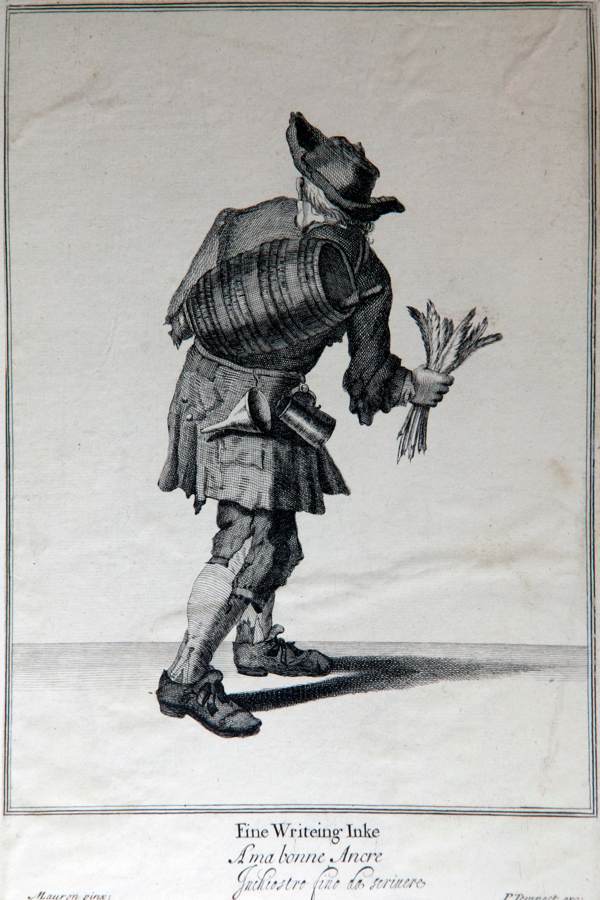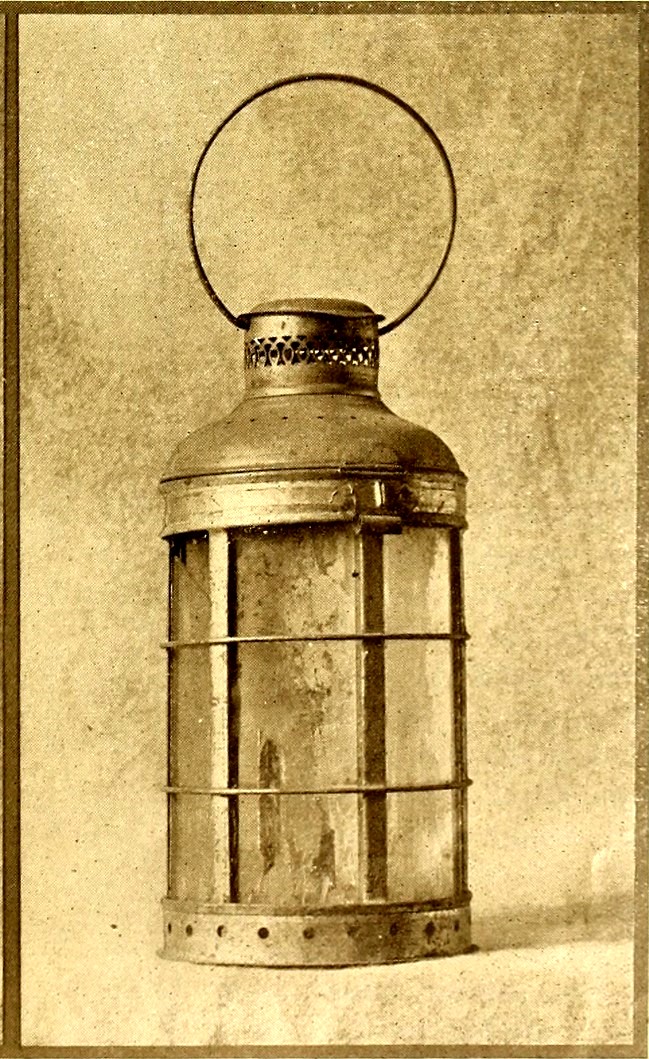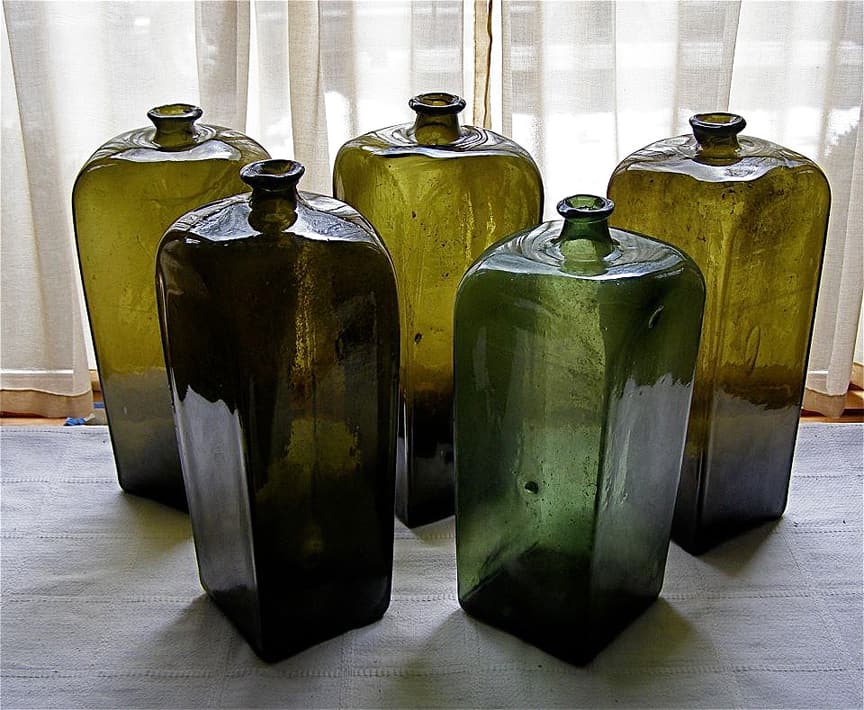-
Posts
5,186 -
Joined
-
Last visited
Content Type
Profiles
Forums
Events
Gallery
Posts posted by Mission
-
-
Happy 30th to Skullwench! (Whoever she it, I'll bet she's married with two kids by now.)
-
Welcome to researching 17th/18th c. documents. I did a little digging with Google to find bb. as an example. (I don't know what such abbreviations mean since they aren't a part of my research interests). I found it with "per bb." because "bb." is too generic and will turn up a lot of unwanted results. From that search, up came the 1850s Parliamentary Papers which say the b.b. means "barrel bulk". This is almost meaningless today, so I looked it up and found it on my favorite dictionary site listed as "a measure equal to five cubic feet, used in estimating capacity". Of course, neither of these sources are contemporary so they may be wrong for the period. (I doubt the definition of b.b. (or bb. as written shorthand in those docs) is wrong, but accuracy of the size estimate is anyone's guess.)
And that's how you have to do it.
Personally, when I am researching irritating things like this for my surgical articles such as abbreviated (not to mention often misspelled) Latin medicinal ingredients, I start comparing the effort required to the result produced and how important that is to the core my article. I have spent hours trying to untangle all the ingredients in a single medicinal recipe on occasion.
BTW, I found another interesting thread in the 15 minutes I spent trying to figure out how to find this for you. (I didn't give you the whole process, I only gave you the steps that worked.) Check out Barrels, Bales and Bags. -
Thank you for the compliments!
Hey, Ed, aren't there bills of lading out there somewhere? I seem to recall PoD saying he printed them up in period style.
While I'm throwing ideas around, didn't a lot of ships carry a limited or even a single cargo? For example, I seem to recall reading in the sailor's narratives (probably Barlow) about how this ship carried wine or that one hauled pepper or another contained sugar, or logwood etcetera. I suppose it would vary just like it does today, but I had the impression a lot of ships just transported one primary cargo with possibly a limited amount of another cargo to fill in spaces not used by the primary cargo. -
I was flipping through my book with reprints of all of the 1687 Laroon's "Cries of London" images... While I was looking for something else, I stopped on this image, and paused.... and though I would do some topic necromancy and bring this up. I thought it had been posted elsewhere, but my Pyracy-Pub-Search-Fu seems to be weak today.
Before posting the image, I do want to say, this seems to be a rarity, and not a common thing, but this does appear to be a gent with a mug strap on his belt.

So you can wear a hanging tankard, but only if you strap a barrel to your back from which to fill it.
Actually, given that he's an ink salesman, I suspect that tankard may be for measuring the quantity of ink dispensed to the customers. (Which is still sort of cool.) I am more curious about what he has stuffed in his shoes, though.
-
That first image is in the UK's National Maritime Museum.
http://www.bbc.co.uk/arts/yourpaintings/paintings/the-wreck-of-the-gloucester-off-yarmouth-6-may-1682-173385 -
The food section of my notes is over 100 pages long in word and it's not organized in any way. The liquids section is close to that long. I had always intended to write about food on my web page but there's so many references in there now that I usually use the search function to find food-related things in my notes these days. (I wrote articles on Pork, Eggs, Pumpkins and Goats in that way.)
For food they would have stored on the ship, you can use the BRN calendar is a pretty good thumbnail guide. But when they were in port, they ate anything and everything and brought some of it on-board to have fresh provisions for as long as they lasted. Somewhere I have notes on sailors eating monkeys. (From Dampier if I remember correctly.) You name it, they probably tried it. However, there are two pretty decent threads here on the forum for food and drink: the food sailors ate (I think I saw some ship's documents in there while glancing through it) and Water, beer and rum. Many other specific foods are discussed in The Way to a Pyrate's Heart forum - although you'll have to expand the range of thread shown by selecting a custom date range in the maroon-colored bar at the top of that forum to see them. Most of the threads are pretty old and I think the default is the last 90 days.
'Manifest' first appeared in print in reference to ship's cargo in 1706, which is smack in the middle of the golden age of piracy. However, 'lading' dates back to the 15th c., so it is probably slightly more likely to have been used. (Things generally changed more slowly 300 years ago than they do today. There was less opportunity to share new ideas.) I've found when I am searching for a concept, it's best to try various different words because what is common today may not have been at all common in the docs written then. However either word is good for your writing. To be honest, when I write my articles, I try to use different words so I don't sound like a parrot repeating the same thing over and over. (Although sometimes it's unavoidable. There's only so many ways to put the concept of bloodletting across...)I can't help you out with weapons, I don't pay the least bit of attention to them when I am researching. They've been discussed ad nauseum on this forum, though. Check out the search function.
-
This may exist, but I've never really seen all of this information in a succinct form. There are mentions of cargo on this forum, but I don't recall seeing a complete list of goods hauled here. (You could search for 'cargo' or 'bill of lading' to see what is here. There are probably actual manifests somewhere in the all the British records. The question is whether they are accessible on-line for free.) I do recall there being a cargo list in the book Journal of the voyage of the Sloop Mary, from Quebeck, together with an account of her wreck off Montauk Point. Don't know if that will help. You can also look at the ever-fascinating Dictionary of Traded Goods and Commodities, 1550-1820 on the British History Site and construct your own bills of lading.
Food is actually trickier to pin down. I literally have hundreds of references from GAoP books on things that were eaten shipboard. I know David Fictum was working on an article on food relating to pirates but I haven't seen it published yet. For the navy, the BRN spelled out a menu for their sailors in the 1731 Regulations and Instructions Relating to His Majesty's Service at Sea which you will find here on page 61 (That is the 1757 edition, but I checked it against my 1731 copy and the chart is the same.) Of course, this was first published about 6 years after the golden age of piracy, but it should give you an idea.
-
The second and third of those numbered images suggest or show fins at the waist instead of feet. Do you get the idea they didn't quite know what to draw for the transition portion of mer-creatures?
That image you included at the top looks distinctly manatee-like.
I wonder what images Columbus was referring to? There must be some Italian or Spanish images of mermaids from the late 15th century... -
You may have a point about not knowing what was in the mind of the common sailor, but until you prove it, you're just speculating. They may have. They may not have. Right now, we don't know. (The problem with most GAoP research, really.) The few accounts I have that provide insight into the common man's mind don't say anything about mermaids.
Nor did I find a lot of images of mermaids from the GAoP, which is also interesting. Mine are about as out of period as yours. (BTW, can you definitely say there isn't a leg under the water? There are hints of it in the one in the foreground. ) Either way your image definitely presents a more traditionally beautiful mermaid than those I used. And the figurehead is an uncontestable example of the traditional, non-legged form, which doesn't surprise me. I'll bet you can find more examples of this form.
) Either way your image definitely presents a more traditionally beautiful mermaid than those I used. And the figurehead is an uncontestable example of the traditional, non-legged form, which doesn't surprise me. I'll bet you can find more examples of this form.
In fact, instead of arguing with me about my article, why not go and dig up some more period and pre-period images? You are usually very good at finding images. I'm sure folks researching the link between pirates and mermaids would really appreciate it. And if you find any golden age of piracy stories about them, you'll be one up on me and we'll both learn something. -
Actually, I was most fascinated to find the mermaid images which showed two clawed feet in the middle, making them look more like monsters than the gorgeous creatures we're used to. A lot of the ghost stories and other fantastic material seems to have its origins either in the middle ages or the 19th century - there's sort of a gap of such material from the late 16th to mid-18th centuries based on the books I have. I came across this again when I was trying to substantiate a lot of the rumors about ghosts and the dead for the article I wrote this Halloween on burial. You read a more modern book on such things and you think you have something, but when you start hunting down the original source (which often isn't supplied by these peddlers of ghost stories - they leave you thinking the stories go back to ancient times), you find out most of them are from the 19th or early 20th centuries.
You're sort of right about the lack of material on mermaids. I think all I had that was period were the stories from Uring and Navarette. While searching for more, I found several thumbnail summaries of mermaid stories in encyclopedias. That's where I stumbled across the Columbus bit which was too absurd not to work into my article. I think there was also some ancient backstory in there too, mostly put in because I seem to recall that it was sort of funny - something about a woman being gradually turned into a fish by the gods until nothing but her head was human. Actually the lack of stories from the time period probably says as much about their presence in the minds of GAoP sailors as anything. If there are more of them out there that date to the late 17th - early 18th centuries, I'd love to see them. Maybe then I could write a full mermaid article instead of just a small section in an article on monsters.
-
Stuff like this is usually buried in other topics, so it's not as easy to find as other things on my page. The last page of my most recent article (on burial at sea) talked about earrings, for example. I got into that because of the silly myth about how the earring was worn to pay for the funeral if the pirate washed up on shore somewhere.
-
I devoted a whole page to mermaids and their mythical relatives in the monsters section of one of my Halloween articles. The most interesting thing I found about them was how they were depicted at the time - they're not quite the glamorous creatures we think of today. You can see that page here.
-
I found some artwork showing period lanterns on wikimedia, so I thought I'd store then in here for those searching for images.
Stilleben mit Küchenutensilien, by Martin Dichtl (before 1710):

A supposed ship's lantern dating to 1720, from American home and garden magazine, July, 1913.

Dentist by Candlelight, Gerrit Dou, c. 1660-65:

Loss of HMS Victory, 4 October 1744, Peter Monomy, (between 1744 and 1749):

-
So I decided to go ahead and research death at sea so I could write my October Halloween article about burial of those who died on a ship. It includes information about autopsies, burial location, burial preparation, how the burial was performed and superstitions about death and sailors. You can read it by following this hotlink.
-
The practice of carrying private goods aboard a merchant ship to sell upon return home appears to have been pretty widespread at this time. Although I don't keep them in my notes, I recall seeing multiple references to it in various sea journals. Some of them are in such an offhand way that I just figured it was a standard practice either permitted by the company or treated in a 'Don't ask, don't tell' fashion.
-
Actually the only thing I'd say was patently wrong about period medicine was humor theory. Much of the rest of it was doing the best they could with the knowledge they had.
-
That's an interesting point about the slaves. While slavery was accepted, there was controversy even at that time about whether it was humane. The EICs decision to stay out of it may have been a moral decision or it may have just been a business decision, but they do appear to have stayed out of that market.
Oh, and as Ed's last comment suggests, he doesn't really think they were the primary source of India's listed problems.
-
Hollywood has a history of not letting facts get in the way of a good story... or even a good visual.

-
Hollywood often uses corporations as the villain because they don't have to deal with interest groups accusing them of bias against them. (Remember the big flap over the use of headhunters in the second movie?) If you take a step back and think about movies and TV shows from the past 30 or 40 years where some external force is the villain, you'll find an awful lot of 'evil' corporations. They're a safe villain for Hollywood to use because they don't usually fight back. (Particularly when they've been out of business for 150 years.)
-
I also found this in Silas Told's account and thought it was sort of interesting in that it was a Spanish pirate [or possibly the Guarda Costa, although Told leans towards it being a pirate] plundering an English Slaver/Merchant off Cuba. It was related by Told in 1785 near the end of his life, although the date of the event would have been 1727 or 1728.
"When we were boarded, the Spanish sailors began to plunder us, stripping and taking all away, from the captain down to the cabin-boy; nor did they spare the cloaths on our backs, but in turn of them clothed us with their filthy ragged frocks and drawers. They killed all our poultry, and set us to picking [plucking] them; put on the ship's large kettle, and boiled both fowls and ducks. They likewise took away all our compasses, save two that had been spoiled with the rain on the Coast of Africa. In short, they took away every useful article, and left us totally destitute of carpenter's, cooper's, and boatswain's tools. They then informed us, that, at eight o'clock the next morning, every one of us, without distinction, partiality or reserve, should be hanged, and that without ceremony, and had also the barbarity to present to us the place and the scaffold erected for that purpose, which was on the platform under Cape Nichola; and we had every reason to fear that they would have carried their designs into execution, had not the providence of God interposed, by making me the instrument of our deliverance therefrom." (Told, 1805, p. 32)
(The rest of the story is long and not relevant to my point. Basically the captain of Told's ship agreed to trade hidden gold and silver watches for the lives of the crew, which Told was sent to retrieve. A pirate crew member followed Told, knocked him out and stole the watches before he could bring them back. When the Spanish pirate captain discovered this, he turned his attention to punishing the thief and let Told's crew go.)
-
Here is a description of making a tent from a sail after the shipwreck of the Scipio caused by hitting rocks off an island during a storm around 1727 or 1728. This is from An account of the life: and dealings of God with Silas Told, first published by Told in 1785 near the end of his life. (1805 edition).
"We speedily hoisted out our long-boat, and stowed several bags of bread therein, together with an old fore-sail, wherewith we intended to make a tent on shore; but the boat being exceedingly rotten, with many leaks in her bottom, and having no tools on board to stop them before we could reach the landing-place, to our mortification the boat sunk to the gunnel, and totally spoiled all our bread; yet, by the assistance of the Almighty, we all escaped to land with the fore-sail, with which, and the help of two long poles, we erected a small tent for the purpose of keeping off the insufferable heat, and scorching influence of the sun." (p. 35)
I think it's notable that the reason given for making the tent was not as shelter while sleeping.
-
Well, legally, you could sell slaves and the contracts for indentured servants at this time. You couldn't legally sell pressed or forced men. Perhaps it could be done in black market fashion, although I've never heard of any such thing. They did trade surgeons between ships in Roberts' fleet. I know of no money changing hands as a result, though.
-
I believe surgeons and navigators on pirate ships are referred to as 'pressed' or 'forced' men in court documents. The difference is probably negligable from a 'freedom' POV, but they were there to do a particular thing, not to serve as laborers.
-
From my research, cork stoppers absolutely existed during the golden age of piracy. They are are discussed in a wide variety of English cookbooks dating to the early 17th century (1609 is the earliest one I have, although there may be others). Not only that, there are references to corked amphora bottles from ancient Rome! They sort of disappeared during the Middle Ages and then reappeared some time in the 15th century when glass bottles began to gain favor. They would have been straight (not tapered like those you often see in old bottles) and hand cut. You can read more about them on this page of my medical containers article.
There are also a wide variety of bottle styles from this time period which include onion bottles. (I did not focus on onion bottles, but they were definitely around throughout the golden age of piracy from what I found.) Probably the most popular style of bottle found on shipwrecks from the 17th century is the case bottle, a square based, sloping side bottle packed in cases. (Thus the name.) The sloping sides made it easier to remove the bottle from the open molds they were made in. This style would have been ideal for transporting liquids that were shipped in bottles (as opposed to casks). Case bottles are usually made of green glass, which (oddly enough) can vary in hue from brown to green to blue. (I go into a lot of detail on period glass on this page of my article.) Case bottles would look like these:




Happy Birthday skullwench
in Scuttlebutt
Posted
Exactly.
I think.
"I can't stop... I have so much to do! I am concerned with matters of consequence. I don't amuse myself with balderdash." -The Businessman, The Little Prince, Alexandre St. Exupery